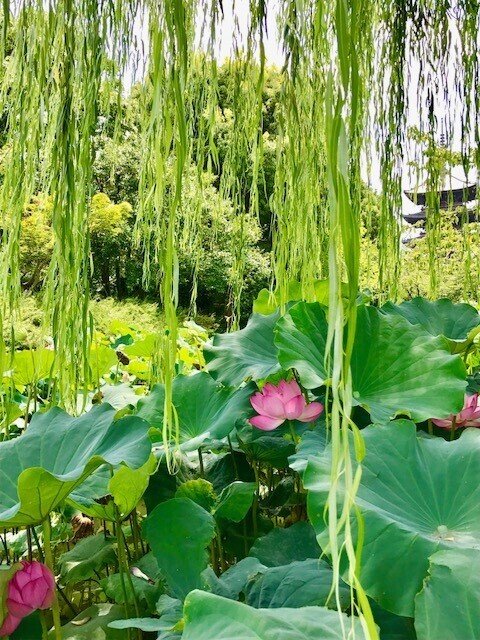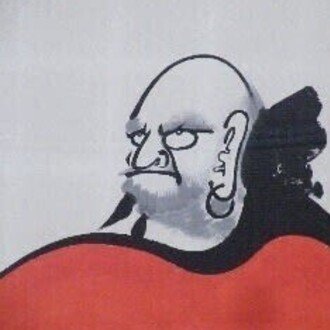
初夏の風物詩「蓮」と「柳」は、伽藍を彩る The early summer traditions "lotus" and "willow" color the precincts.
東寺の蓮池のほとりに柳の木がある。平安時代の能書家 小野道風の逸話に、蛙が柳に飛びつこうと何度も繰り返す。このひたむきの蛙の努力を見ていると、努力すれば運も味方する、という話がある。
There is a willow tree on the banks of the lotus pond in Toji. In the anecdote of Ono no Michikaze, a Noh calligrapher of the Heian period, the frog repeatedly tries to jump to the willow. Looking at the efforts of this single-minded frog, there is a story that if you make an effort, you will be on your side with luck.
小野道風が「柳」と「蛙」を結びつけたことにより、その後、柳と蛙が一対で俳句や川柳にもよく登場する。そこに初夏の寺院の風物詩である「蓮」が池を彩る。そんな風景が、寺院の静寂とよくマッチする。
After Ono no Michikaze linked "willow" and "frog", a pair of willow and frog often appeared in haiku and senryu. "Lotus", which is a tradition of the temple in early summer, colors the pond. Such a landscape matches well with the silence of the temple.

「柳」といえば、中国の古典によく出てくる。別れの場面で近親者が別れの餞に柳を輪にして手渡す風習があったようだ。そんな数々の風習の素が、空海が唐から持ち帰った行李(こうり/柳で編まれた収納箱)の中に詰まっていたのかも知れない。
Speaking of "willow", it often appears in Chinese classics. It seems that there was a custom that a close relative handed a willow in a circle to the farewell at the scene of farewell. It is possible that Kukai's elements of such customs were packed in the kori (storage box woven with kori / willow) that Kukai brought back from Tang.

リポート & 写真 / 渡邉雄二 Reported & Photos by Yuji Watanabe
いいなと思ったら応援しよう!

